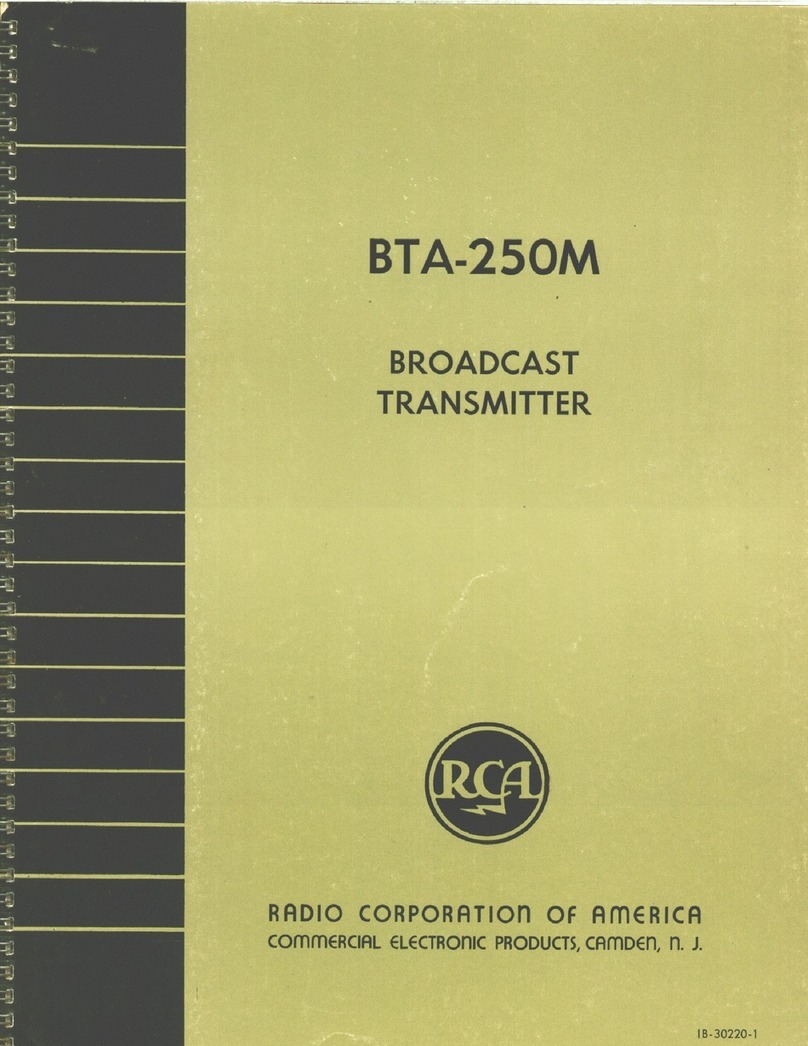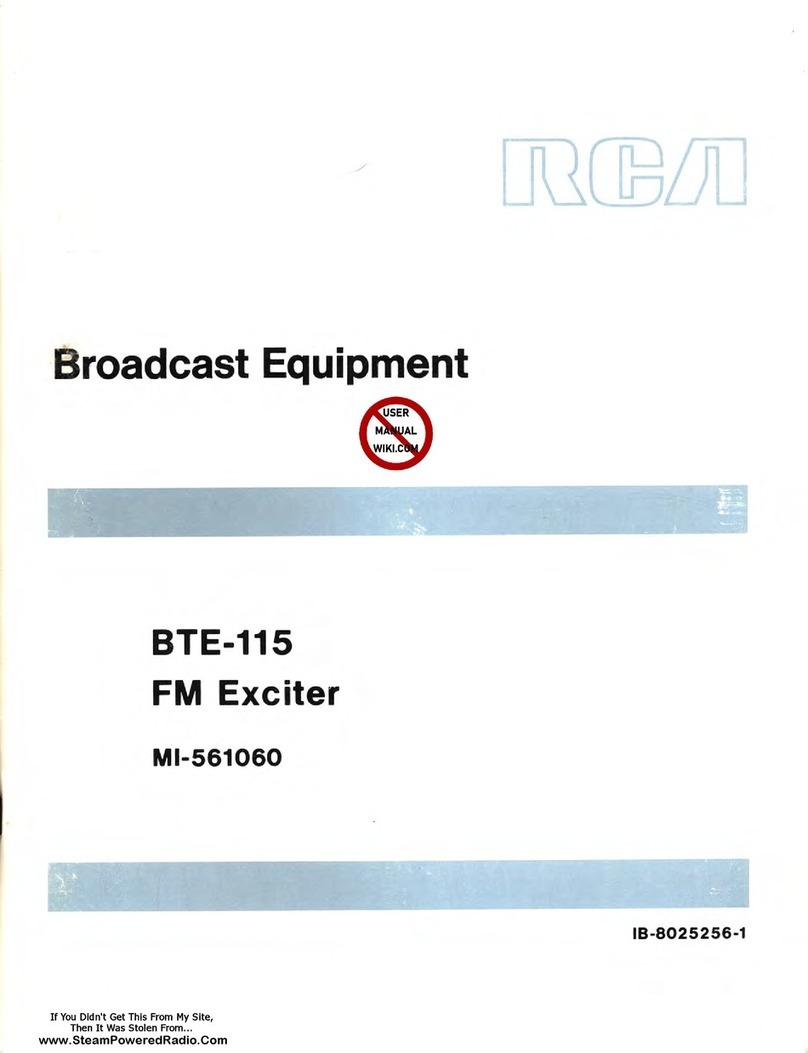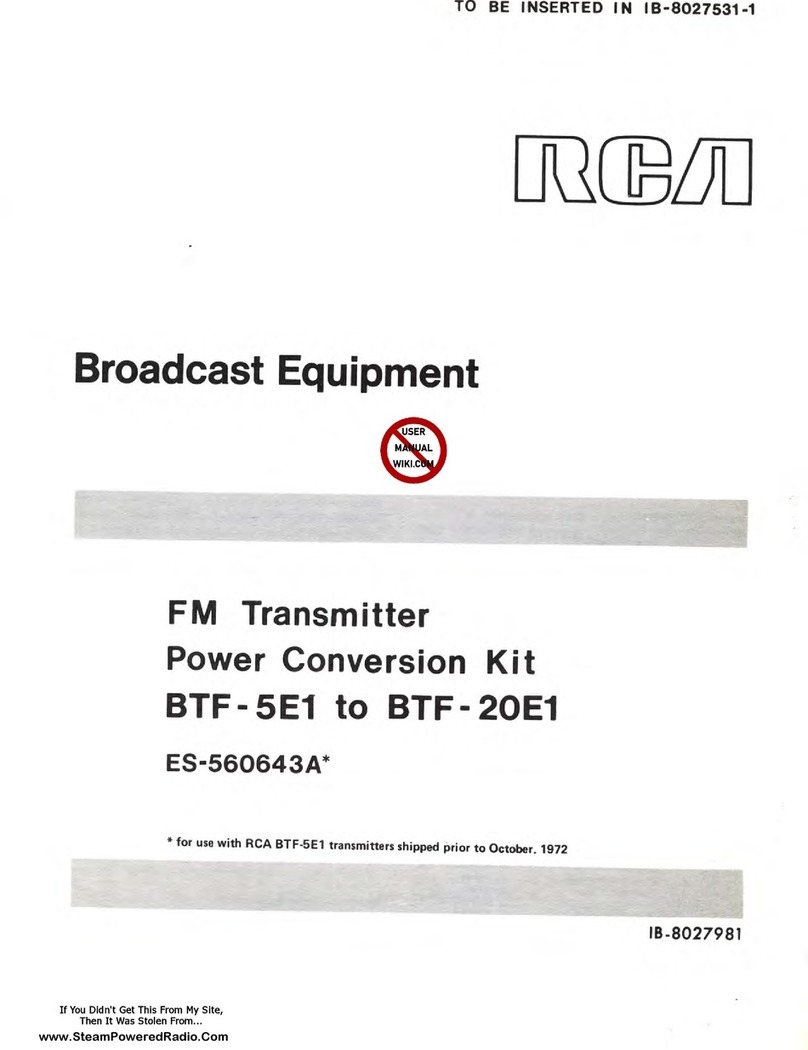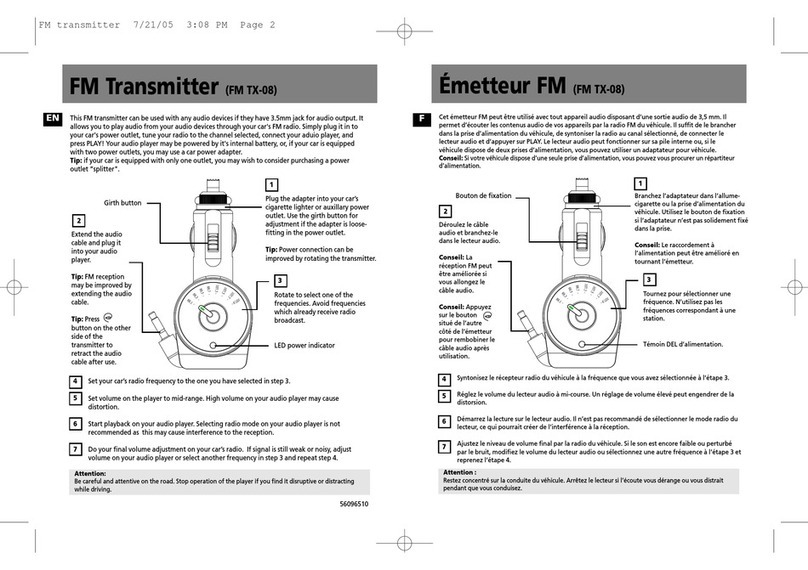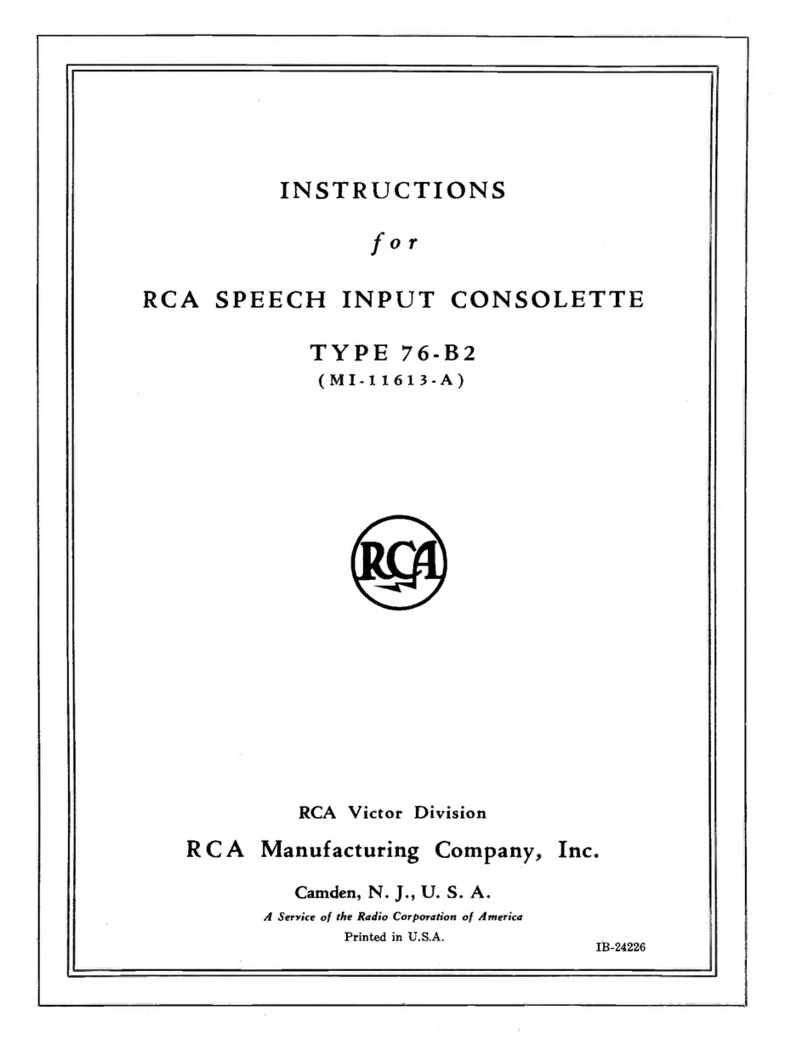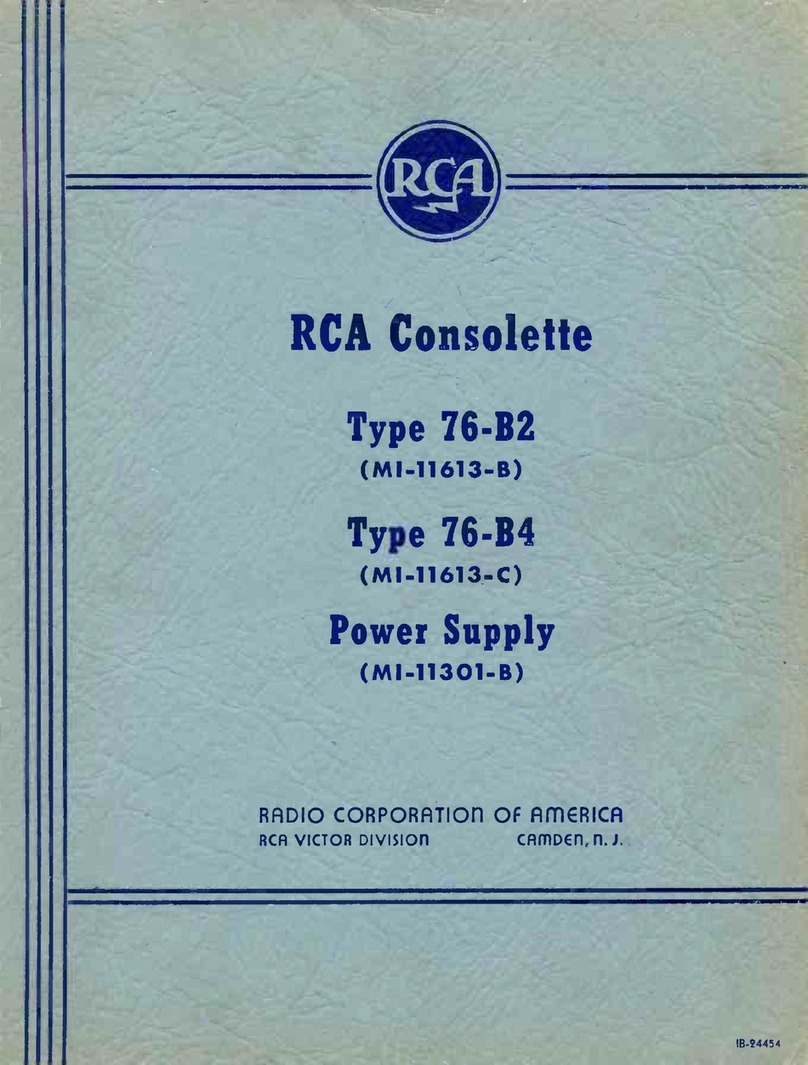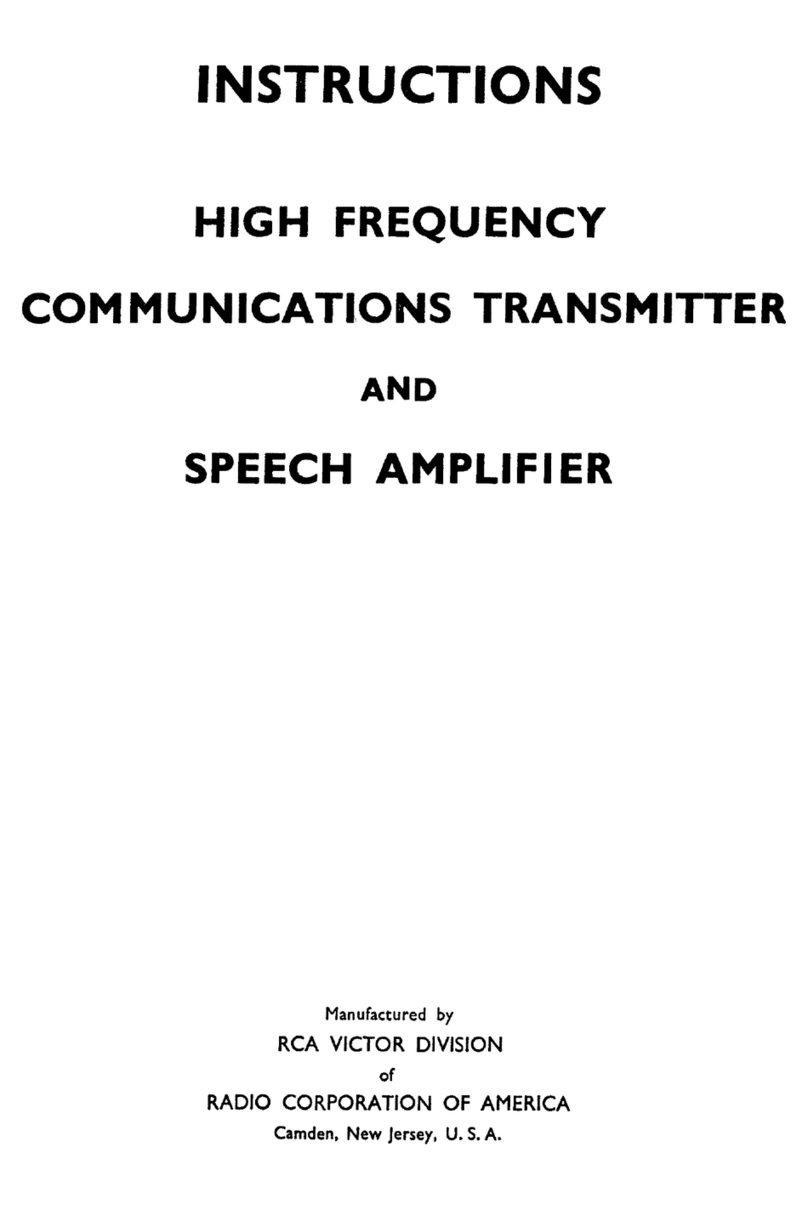
www.SteamPoweredRadio.Com
E-4
DESCRIPTION
The
RCA BTE-10B, ES-27278,
is
a frequency mod-
ulated exciter which provides an r-f
output
of
ten
watts
at
any specified frequency in the 88 to 108
megacycle band.
The
compact
unit
incorporates a
subcarrier
modulator
stage which can be fed
from
a subcarrier
generator
such
as
the RCA
BTX-
IA to
provide for
multiplexing
one
or
two subcarriers
on
the main
FM
channel. Thus,
it
is
designed especially
to provide for various applications
of
FM multiplex
such
as
ba
ckground
music, and, if it
should
become
authoriz!!d, stereophonic sound.
The
BTE-10B
is
the exciter used in the RCA
BTF-5B
5KW
FM
Transmitter.
It can be used to
replace the exciter units
of
previous RCA FM trans-
mitters,
or
that
of
any ocher FM
tran
smitters where an
exciter
power
output
of ten watts
is
a
dequ
ate.
The
unit incorporates features which make it easy
co
adjust, easy to
maintain
a
nd
very reliable in operation.
All r-f multipliers,
including
the
output
stage, em-
ploy single-tuned circuits.
The
exciter can be housed
in a
standard
cabinet rack
together
with
a subcarrier
generator.
Employing
miniature
tubes
throughout,
the BTE-10B
is
a self-contained unit
with
built-in
power supplies and an oscilloscope
co
facilitate
alignment.
The
BTE-10B
when
properl
y adjusted,
and
used
fn
conjunction with the BTX-1 A Subcarrier Gener-
ator, will
provide
subchannel
perforn
~a
n
ce
compa-
rable
to
the main
FM
channel
_with
regard
co
signal-
co
-noise ratio
and
distortion.
The
frequency response
of
the subcarrier will be somewhat limited when
programming
the subcarrier separately.
R-f
multiplier
and
power
amplifier stages
of
the
BTE-108 use relatively
broadband,
single-tuned
or-
cuits, thus simplifying
adjustment
. A
built
-i
n
meter
can be switched to read the
following
voltages a
nd
currents:
Modulator
cathode current; second
and
third
multiplier
grid
currents; PA cathode and
plate
current;
AFC
control voltage;
and
plate voltage.
The
monitor
oscilloscope
incorporated
in the
ex
-
citer simplifies
adjustment
and
maintenance
of
the
AFC
frequency dividers. A switch permits instan-
taneous checking
and
adjus
tment
of
a
ll
five dividers,
and
a check
of
the control action
of
the phase
detector. Displays are in the
form
of
Lissajous' fig-
ures, with the advantages
th
at
lock-in
of
the
divider
s
can be observed easily. Checks can be
made
during
operation
without
disturbing
the
AFC
circuit in any
way.
This
type display requires no synchronization
or
o
ther
adjustments.
Power
supplies employ semiconductor rectifiers.
The
high
voltage regulated supply which furnishes
d
-c
plate
and
screen voltage utilizes a
bridge
type
germanium
rectifier.
Modulator
and
oscillator fila-
ments are
supplied
by a d-c supply
employing
a full
wave silicon rectifier.
All
components
of
the BTE-10B are
mounted
on
a vertical chassis. Special hinge-type'
mounting
pins
at
the bo
ttom
corners
permit
the
top
of
the chassis
to be
swung
out
for
access
co
the
wiring
and
circuit
components
on
the
underneath
side.
CIRCUITS
A block
diagram
of
the BTE-10B Exciter
is
shown
in Figure
2.
Circuits consist of: A master oscillator
which operates
at
I/18th
of
the
carrier frequency;
two reactance
modulators
to
provide
modulation
for
the main
channel;
a
third
reactance
modulator
for
the subcarrier; three frequency
multipliers
including
the
output
stage to
bring
the
output
frequency up to
the 88 to 108 me range; automatic frequency control
circuitry;
and
power
supplies to furnish a-c
and
d-c
voltages
for
these stages.
The
master oscillator
is
a 6AQ5
Hartley
type
oscillator which operates
at
a frequency between
approximately five
and
six
me.
,
depending
upon
the
desired
output
frequency.
The
plates
of
the two
6AQ5
reactance modulators
are
connected to the
oscillator
plate
,
and
the grids, which
are
in push-
pull, are inductively coupled to the place tank. R-f
voltages
on
the two
modulator
grids
are
180 degrees
out
of
ph
ase with respect to each other,
and
each
is
90 degrees
out
of
phase with the oscillator place.
Thus, one tube appears as a capacitive reactance and
the
other
appears
as
an inductive reaccance across the
oscillator tank.
The
magnitude
of
the reactive com-
ponent
presented to the
tank
coil varies
with
the
audio voltage applied to the
modul
a
tor
grids,
and
the frequency
of
the oscillator
is
varied accordingly.
The
mean frequency
is
controlled
by the bias voltage
applied
to one grid.
This
bias
voltage
is supplied
by the
automatic
frequency control circuit to be
described in a later
paragraph.
The
third
reactance
modulator,
an RCA
Type
6CL6, provides
for
modulation
of
the subcarrier
on
the main r-f ca
rrier
. This reactance tube
is
coupled
to
on
ly a
part
of
the oscillator coil since the required
deviation
of
the r-f carrier
by
the subcarrier
is
small.
Use
of
the
pushpull
modulator
and
the inductive
coupling
circuit results in a highly linear operation






